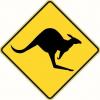Derek-
If you're fairly new to planes, I'd really try to get to an event or generous Creeker's shop to test out a couple different styles.
The right smoother for you is a matter of personal taste, so know there is not a wrong choice here, and know that either can likely be resold at fairly close to new price value if you keep it in good shape.
That being said, if you ever plan to get a Low Angle Jack plane from Veritas, I'd get the BU smoother. The reason is that the blade sharing between the two comes in handy. Also, the sides of that Jack are smooth, so you can use it for shooting. The Jack is light enough that it's not fatiguing and heavy enough and wider than the LA smoother so I find it's a more appropriate choice for most shooting tasks. Try to foresee whether you'll ever purchase the LA jack. All you will read about this being wonderful is true. This may inform your current smoother purchase.
The BU smoother tends to be a more popular plane if that tells you anything. But then again, Cold Play tends to be a popular band so there's no accounting for popular taste...
As an aside, it is confusing that the names of the planes don't coincide with their blade sharing-ability. To be clear, these confusingly named planes share the same blade: Low Angle Jack, Bevel Up Smoother, Bevel Up Jointer.
The Low Angle Smoother and the small Bevel Up Smoother have unique blades.
Veritas seems to use the "Bevel Up/ Low Angle" distinction to refer to plane cheeks. The "Bevel Up" planes (smoother, small smoother, jointer) doesn't have smooth sides. "Low Angle" planes (jack, smoother, block) do.





 Reply With Quote
Reply With Quote


 ).
).
 That's Jeffrey well and truly confused by us all - and for sure my experience is limited, and restricted to what i have.
That's Jeffrey well and truly confused by us all - and for sure my experience is limited, and restricted to what i have. 
